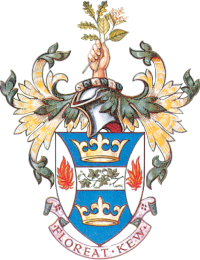I developed a passion for cycads whilst working at Kew, and this prompted a desire to observe and study them in their natural habitats around the world. In 2001 I spent two weeks visiting localities in Mexico and was amazed and fascinated by the incredible diversity of flora that occurs in their natural habitat. I longed to return and take more time to make a more general study of the flora. To make this possible I formed a small group of like minded horticulturists, through my contacts here at the Eden Project and an advert placed in PlantNet so we could share the cost of a guide, vehicle hire, fuel and accommodation, for a trip in 2004. Two Kew graduates, Adrian Lovatt and Yoke van der Meer and another ex-staff member Linda Lever were among the six participants.
We chose the southern state of Oaxaca as it is botanically the richest in the country, with over 8,000 species described and an estimated 12-15,000 in existence. Our visit was planned to coincide with the end of the wet season (late October) as many of the drier habitats are lush and green and it’s also the best time to observe flowering plants. Our guide Jeff Chemnick from California. is associated with the non-government organisation, SERBO (Sociedad para del Estudio de los Recursos Bioticos de Oaxaca). Based in the city of Oaxaca, they work on studying the biodiversity of the state. Together they had planned our route and itinerary to make the best use of our time and take us to the best botanical hotspots. They certainly succeeded! Despite the later than usual seasonal rain, we had a spectacular show of flowering plants, including many Salvia and Dahlia species which were high on the group’s wish list.
The landscape is hugely varied. Close to the city of Oaxaca the tropical deciduous forest is dominated by the columnar cacti Neobuxbaumia. Areas here had been cleared to cultivate Agave angustifolia for Mezcal production, which is locally more popular than Tequila. A must see, not far from the city is the ancient Montezuma cypress, known as El Tule, an immense specimen of Taxodium mucronatum which is estimated to be 2-4,000 years old and has a girth of more than 36 metres. At the Pacific coast we trekked through coastal tropical thorn forest, which is extremely hazardous and involves scrambling over boulders on cliff edges whilst trying to avoid being spiked by the abundance of Opuntia species which occur there! At higher altitudes up in the Sierra Madre Mountains, the cloud forest is much cooler and very atmospheric. Here we observed Chamaedorea palms, abundant Cyathea, Blechnum ferns, many bromeliads, including Guzmania and Tillandsia species. The lowland tropical forest is often degraded, with land cleared for the cultivation of coffee, corn and beans. Another spectacular habitat is the high desert with massive tree size specimens of the cactus Pachycereus weberi, Beaucarnea with huge swollen trunks, the rare Fouquieria purpusii and giant barrel cactus, Echinocactus platyacanthus as tall as me!
I have gained an appreciation of the diverse flora of southern Mexico and hope to continue my association with this flora either in the country itself or through the planned future construction of the Dry Tropics Biome at the Eden Project. I would like to thank the Kew Guild for their contribution to this successful trip.
